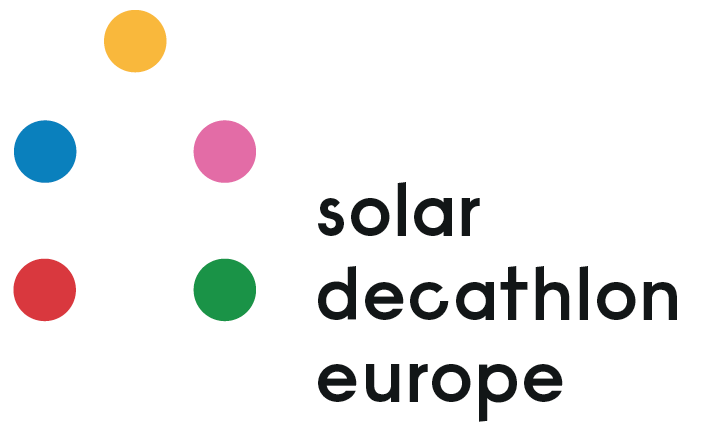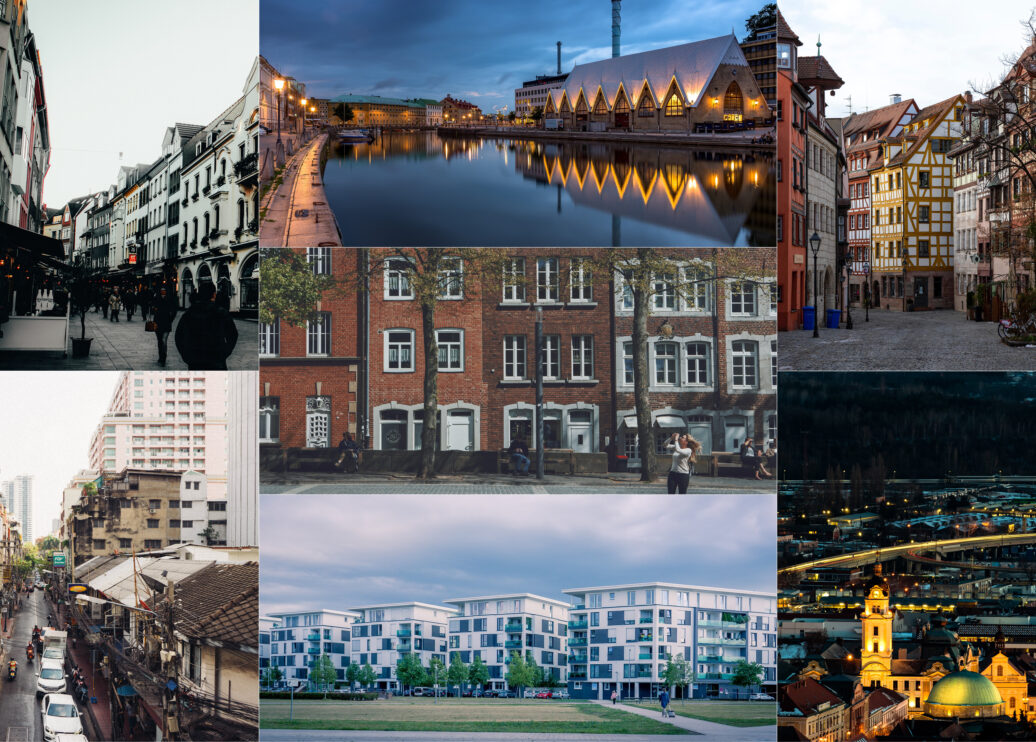Urban Stories from the SDE21 in 22! _ Activating Neighbourhoods.
Today, we share more urban stories through the prism of activation. This theme is explored through the projects of seven Teams competing in the 2021 edition of the Solar Decathlon Europe, otherwise known as SDE21, going urban in 22!
As we know, the SDE21»22 places its focus on three specific urban situations: renovations & extensions; closing gaps; and the renovation or addition of a storey. The Teams profiled in this article are producing innovative designs for the renovation and addition of storeys, as well as closing a gap in their urban setting.
mind the gap
Team SAB, representing Bangkok University in Thailand, presents a design based on three key aspects: urban mobility, energy concept, and recycling materials. When activating an urban area, it is paramount to connect it to its community. In SAB’s view, architecture “is about the spirit and happiness of the people who encounter it”. Their architectural intention reaches the community through the use of recycled materials, with an innovative concept: Team SAB will be making Ultra High Density particle boards made from compressed ‘Tetra Pak’ milk boxes. The layered Tetra Pak aluminium, which is otherwise difficult to recycle, will be exposed to the sun, collecting heat for ingenious use in the building, and helping to close an urban gap. This Team’s other explorations include the use of beer brewer’s grain; we will have to visit their house in Wuppertal to learn more!
As we continue our exposé on the Teams, we can follow the constructive elements and materials for reaching another part of the world. Also working on the ‘closing gaps’ urban situation, Team Local+, from Aachen in Germany, is working on a low carbon lifecycle, one with a holistic approach, addressing the topics of materiality, architectural style, and that enables healthy life and lifestyle concepts. This Team’s approach to the SDE Competition combines innovative and futuristic systems as a path toward widespread use of renewable raw materials. Key to this are assemblies that consider easy separation once the components are no longer used. This approach will lead to a design aimed at an ecological lifecycle that is cost-effective, energy-efficient, supporting the local community. Their aim is to break away from ordinary linear living and room concepts, to meet multiple needs in a versatile way.
The building’s lifecycle is also the focus of the Team representing Pecs University, ‘Lungs of the City’. In another closing gaps urban situation, the project focuses on optimising living spaces in re-gardened city blocks. With this concept, the Team’s goal is to revitalise the urban streets often bordered by lifeless walls. By leaving unnecessary floor spaces behind, a healthy urban environment is supported by a green architecture that can address urban heat topics while prioritising space for the community. Can streets become public parks? The SDE21»22 Competition event in Wuppertal will reveal more…!
reduce, reuse, recycle
The following four Teams in this exposé are addressing another well-known urban situation. Focusing on the renovation and addition of storey, these Teams are activating neighbourhoods and communities with innovative approaches towards materiality and use of space.
Team Level Up, representing Rosenheim Technical University of Applied Sciences, are integratig their green façades into a lightweight modular solution for the re-densification of urban areas. Focusing on the building stock built between the 50s and 70s, the Team is densifying the communities by adding lightweight storeys on the existing buildings, while ensuring spatial flexibility. Multipurpose rooms will become shared spaces for the community, showcasing an expressive and visionary architecture that merges the rooftop additions with the existing urban texture.
Another prefabricated modular approach is being adopted by Team MIMO, of the Düsseldorf University of Applied Sciences. Standing for Minimal-Impact Maximum-Output, the Team’s approach to densification involves the local communities in the development and building of a holistic urban landscape. This firmly roots the project in the principle of building primarily in the interest of an improved location. The proposed affordable and resilient housing concept is coupled with shared areas, and an infrastructure offering energy and mobility.
With an eye on limiting urban sprawl, and the consequent need for densification in inner urban areas, Team RoofKIT from the Karlsruhe Institute of Technology is on a mission to prove that rooftop additions are a viable and reachable solution. With a module-based approach, the lightweight structures are added to the city’s roofs, where it will be possible to provide housing ‘for all levels of society’. Seeing the city as a possible resource supplier, the Team proposes to use the concept of urban mining. The Team’s goal is to prove that materials can be ‘mined’ from existing urban spaces, thanks to the use and development of new technologies, capable of separating available materials into quality building elements. This Team engages us with the promise of using innovative materials ‘coming directly from our laboratories’. Again, find out what these innovative materials will be at Wuppertal’s Solar Campus in 2022.
Team C-Hive, from Gothenburg’s Chalmers University of Technology will investigate how rooftop extensions can become co-live and work units, with a dialogue between public and private spaces, with an aim on a human-scale urban environment. This ambitious goal will also be made a reality thanks to the showcase of a new, radically innovative, construction material. This rooftop extension will be the first house built with cellulose-based 3D printed elements combined with timber construction.
Activating the urban environment takes multiple perspectives, from the mining of urban materials, through the city’s expansion on its rooftops, to recognising opportunities that single buildings can bring to local communities. Transversal to all the SDE21»22 Teams is a bold and innovative approach to architecture, in which Teams celebrate the opportunity that Solar Decathlon Europe Competition event brings. Teams are rethinking how we live and interact with the urban environment, reimagining its textures, and focusing on us all, citizens who live, work, and experience our cities around the world.
Visit the featured Teams’ websites here:
Team SAB
Team Local+
Team Lungs of the City
Team Level Up
Team MIMO
Team RoofKIT
Team C-Hive
See all the Teams participating in SDE21 here: SDE21 Teams and Projects
Other articles in this series:
Lights in the Background
Inspiration, Imagination & Urban Experimentation
Pictures credits:
Aachen: Photo by Daniel von Appen on Unsplash
Bangkok: Photo by Martin Péchy on Pexels
Dusseldorf: Photo by Moheb Anwari on Unsplash
Feskekôrka, Gothenburg: Photo by Pasi Mämmelä on Pixabay
Karlsruhe: Photo by SNCR_Group on Pixabay
Nuremberg: Photo by Thomas Winkler on Unsplash
Pecs: Photo by Nikolett Emmert on Pexels

